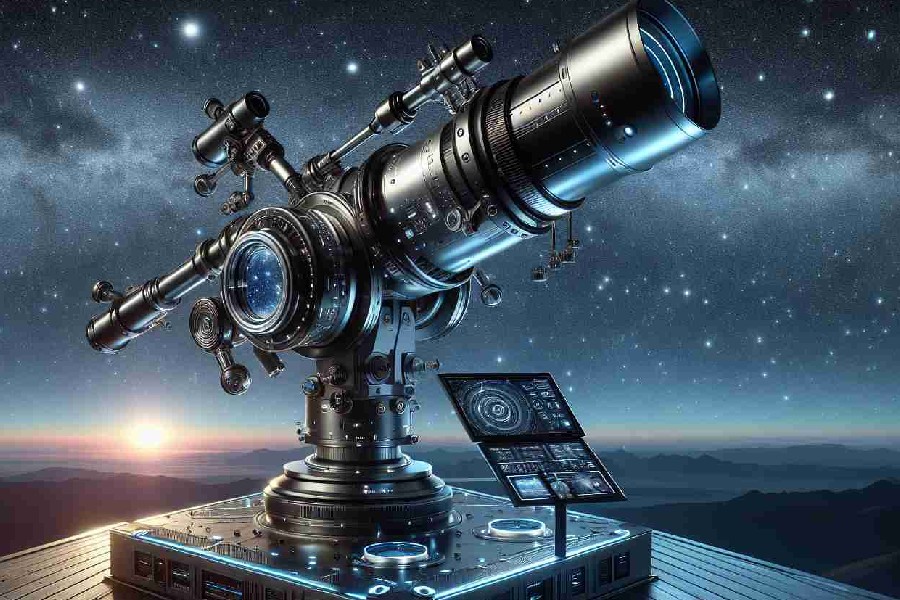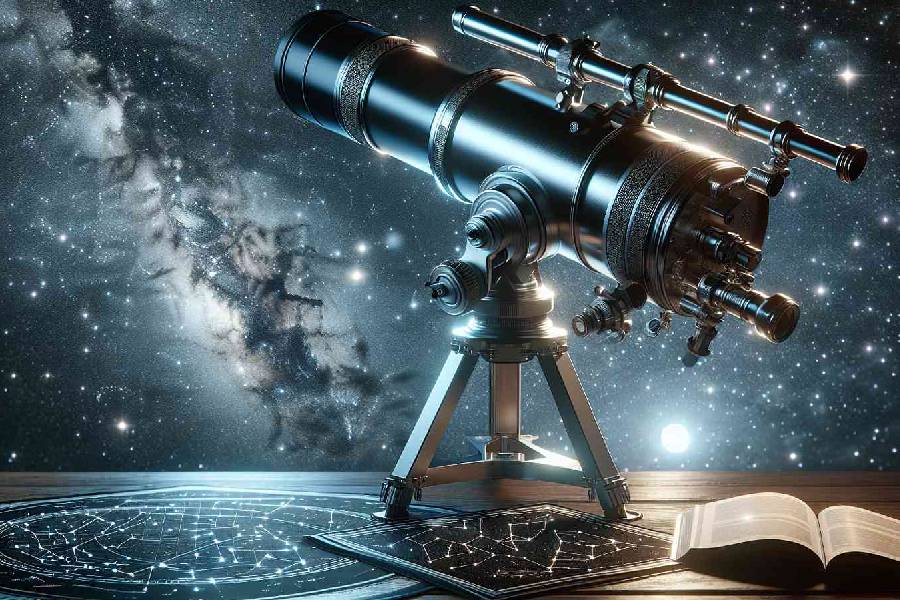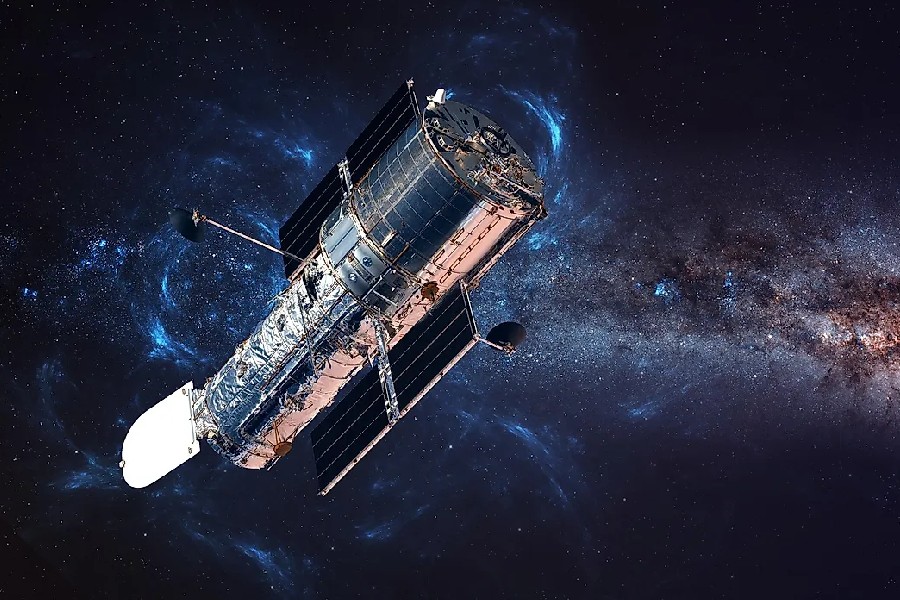Ever wondered how a small, polished lens can unveil the secrets of distant galaxies or the intricate details of a planet’s surface? In this article, we’ll dive into the incredible telescope facts and technology behind telescopes, unlocking the mechanisms that allow us to peer into the vast expanse of space.
From the ancient discoveries that shaped the earliest telescopes to the cutting-edge innovations of modern observatories, we’ll trace the evolution of these remarkable instruments.
Discover the role of mirrors, lenses, and the latest advancements in technology that contribute to the astonishing clarity and precision of telescopic observations. Our exploration will unveil telescope diversity, from optical telescopes to powerful radio telescopes capturing invisible wavelengths of our universe.
Prepare to be amazed by the mind-boggling facts and figures associated with telescopes – their sizes, capacities, and the mind-bending distances they traverse.
Whether you’re a budding astronomer or a casual stargazer, these facts will transform the way you view the night sky, fostering a deeper appreciation for the tools that open windows to the cosmos.

Top 6 Telescope Facts
Galileo Galilei revolutionized astronomy with his telescope design
Galileo Galilei, a pioneering astronomer, revolutionized telescopic advancements in the early 17th century. His invention of an improved refracting telescope with a convex objective lens transformed observational capabilities.
This innovative design magnified celestial objects, enabling Galileo to make groundbreaking discoveries. Galileo’s telescope revealed previously unseen details on the Moon’s surface, demonstrating its potential for astronomical exploration.
His meticulous observations of Jupiter’s moons challenged existing astronomical beliefs, fostering a new era of celestial understanding. Galileo’s contributions marked a pivotal point in the evolution of telescopes, laying the foundation for future astronomical discoveries.
There are various telescope designs and applications
Introduction to telescope varieties
Telescopes vary widely in design, each tailored to specific astronomical pursuits. Refracting telescopes, using lenses, provide clear, crisp images, making them ideal for beginners. Reflecting telescopes, relying on mirrors, minimize chromatic aberrations, proving versatile for various observations.
Catadioptric telescopes, a blend of lenses and mirrors, offer compact yet powerful instruments. Explore the unique strengths of each design to find the perfect tool for your astronomical interests.
Explore the diverse applications
Telescopes serve diverse purposes in the vast realm of astronomy. Optical telescopes, adept at visible light observations, unveil the beauty of stars, planets, and galaxies.
Radio telescopes tap into radio waves, revealing hidden cosmic phenomena and offering insights into structures and events. Space telescopes, such as the Hubble, orbit beyond Earth’s atmosphere.
Capturing distortion-free images and providing a unique perspective on the cosmos. Each type of telescope plays a vital role in expanding our understanding of the universe.
The mirrors are key to a telescope’s optical power
Distinct roles of primary and secondary mirrors
Telescopes operate on the intricate dance between primary and secondary mirrors. The primary mirror, typically the larger of the two, gathers and reflects light to a focal point. This initial reflection is fundamental for image formation, setting the stage for detailed astronomical observations.
The secondary mirror, strategically positioned in the optical path, further refines the gathered light. Redirecting it toward the eyepiece or sensor. The secondary mirror contributes to the final image’s clarity and sharpness. Together, these mirrors orchestrate the ballet of light, laying the foundation for the telescope’s optical prowess.
Emphasize critical importance
The interplay of primary and secondary mirrors is crucial in determining the quality of astronomical images. The precision in their alignment directly impacts the telescope’s ability to render clear and detailed views of celestial objects.
Ensuring the proper shaping and positioning of these mirrors is crucial. It is essential for optimizing the telescope’s performance. This optimization leads to delivering images that unravel the mysteries of the universe with unparalleled clarity.

Telescopes help us uncover the hidden parts of the cosmos
Optical telescopes
Optical telescopes use mirrors, lenses, and detectors to observe visible light from space. Popular optical instruments include cameras, which capture high-resolution visible light images and reveal shapes and surface features of celestial bodies, and spectrographs, which identify chemicals present by absorption lines.
Radio telescopes
Radio telescopes detect radio waves from space. They can see through gas and dust that obscure visible light. Key radio instruments are radio receivers.
Which detect radio emissions from stars, galaxies, and more to study stellar evolution and galactic structure, and interferometers. Which combines signals from multiple antennas to achieve high-resolution radio imaging.
X-Ray and gamma-ray telescopes
These telescopes study the highest-energy light. They reveal extreme astronomical events and objects. Critical instruments include detector arrays. These absorb and record X-rays and gamma rays.
They uncover black holes, neutron stars, and supernova remnants. Focusing telescopes are also critical. They use grazing-incidence mirrors to focus X-rays.
Observing different wavelengths
Viewing different wavelengths provides complementary information about cosmic objects. Optical reveals physical form. Radio penetrates dust to uncover structure. Combining multiple wavelengths leads to the most complete understanding of the universe.
Telescope capabilities depend on light gathering and resolution
Light gathering ability
More light gathering allows for the detection of fainter objects. Larger mirror sizes mean more light collection. Advanced detectors also improve light gathering, as they can record very weak signals. Better light gathering reveals more distant stars and galaxies and enables the study of dark matter and exoplanet atmospheres.
Telescope resolution
Higher resolution produces clearer images and separates closely spaced objects. Resolution is limited by mirror or lens quality. Atmospheric distortion also reduces resolution. Space telescopes like Hubble avoid atmospheric blurring, while adaptive optics can correct for some distortion.
Sharper resolution shows finer details of planets, nebulae and star clusters. It also helps distinguish galaxy types and shapes.
Giant telescopes expand our view of the universe
The Giant Magellan Telescope (GMT)
The Giant Magellan Telescope is one of the largest telescopes in the world. It’s under construction, located in Chile. The GMT has a massive mirror made up of seven separate segments, which work together to create a single, powerful viewing surface.
Using adaptive optics, it will study distant galaxies, black holes, dark matter, alien worlds, and even the possibility of life on other planets.
The Five-Hundred-Meter Aperture Spherical Telescope (FAST)
FAST is a huge 500-meter diameter radio telescope in China that was completed in 2016. It detects faint radio signals from deep space and searches for exoplanets and extraterrestrial intelligence. FAST is by far the world’s largest single-dish radio telescope.
The Arecibo Observatory
This iconic 305-meter radio telescope operated from 1963 until 2020 in Puerto Rico. Arecibo pioneered radio astronomy and SETI and even beamed messages to aliens. The Arecibo Observatory left behind an impressive scientific legacy.
Other Interesting Telescope Facts
- Since Hans Lippershey’s invention in 1608, telescopes have played a crucial role in unraveling cosmic mysteries, showcasing an intriguing evolution over the centuries.
- The Hubble Space Telescope, launched in 1990, epitomizes this progress, capturing stunning images and vital data.
- Advancements continue with projects like the under-construction Giant Magellan Telescope in Chile.
- Telescopes extend beyond visible light, with the Arecibo Observatory and the Chandra X-ray Observatory exploring radio waves and X-rays, respectively.
- Interferometry, exemplified by the Very Large Telescope, enhances resolution.
- Telescopes, be they Earth-based giants or space-borne wonders, shape our cosmic perspective.
From Kepler’s exoplanet discoveries to observations confirming the universe’s expansion, these telescopes promise further revelations in the ongoing quest for astronomical understanding.

Conclusion
As we have seen, telescopes are essential tools for exploring the mysteries and wonders of the universe. Galileo’s simple optic tube started it all. Today we have cutting-edge behemoths like the Extremely Large Telescope.
Throughout their history, telescopes have enabled countless revolutionary discoveries. We hope you have realized from this exploration that telescopes utilize physics and technology in ingenious ways. They gather light from astronomical objects, magnify their images, and analyze the signals.
Telescopes are complex tools that leverage science and engineering. Advancements in telescopes, instruments, and techniques will continue to push the frontiers of astronomy and our knowledge of the cosmos.
This article has helped you understand better the science behind telescopes, their history and types, and why there are such invaluable telescope facts for studying the universe. There is still much to learn about our amazing universe.
